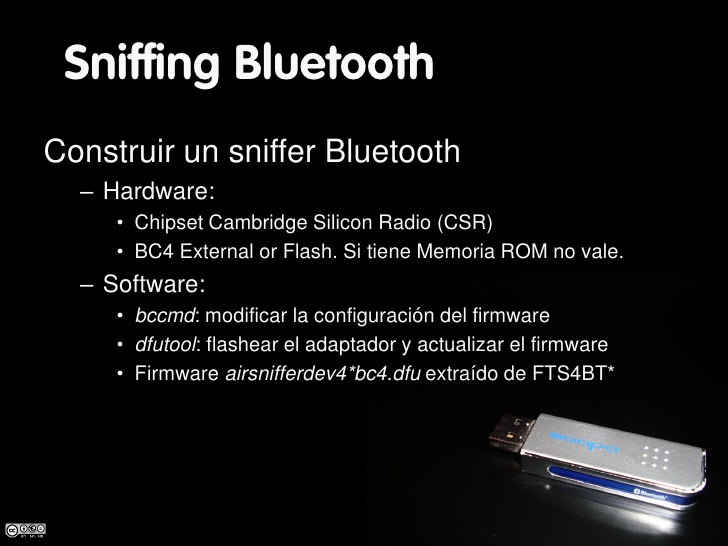
- Cambridge silicon radio bluetooth 23403 how to#
- Cambridge silicon radio bluetooth 23403 skin#
- Cambridge silicon radio bluetooth 23403 windows#
The dns_spoof plug-in is what will be doing the attack in this example, so we have to modify the configuration file associated with that plug-in. Ettercap at its core is a packet sniffer which utilizes various plug-in to do the various attacks it can perform. Prior to executing Ettercap, a bit of configuration is required.
Cambridge silicon radio bluetooth 23403 windows#
If you are installing Ettercap on a Windows machine you will notice it has a GUI which works great, but for this example we will be using the command-line interface. If you do a bit of research on this website you will find that Ettercap has a great deal of functionality beyond DNS spoofing and is commonly used in many types of MITM attacks. We will be using Ettercap, which has both Windows and Linux versions. There are a few different tools available that can be used to perform DNS spoofing. A depiction of this attack is seen in Figure 4.įigure 4: The DNS Spoofing Attack Using the DNS ID Spoofing Method

The goal of this scenario is to get users on the target network to visit our malicious website rather than the website they are attempting to access. First, we will ARP cache poison the target device to reroute its traffic through our attacking host so that we can intercept the DNS request, and then we will actually send the spoofed packet. We will complete this process doing two steps with a single tool. This means that if our attacking computer can intercept a DNS query sent out from a target device, all we have to do is create a fake packet that contains that identification number in order for that packet to be accepted by that target. We will be using a technique called DNS ID spoofing.Įvery DNS query that is sent out over the network contains a uniquely generated identification number that’s purpose is to identify queries and responses and tie them together.
Cambridge silicon radio bluetooth 23403 skin#
There is more than one way to skin a cat and there is definitely more than one method available for performing DNS spoofing.

Basically, this turns a DNS server into a client itself, seen in Figure 3.įigure 3: A DNS Query and Response Using Recursion Spoofing DNS Recursion is when one DNS server queries another DNS server on behalf of a client who has made a request. After all, it might be fair to expect our internal DNS server to know the name to IP address mapping of our local intranet server, but we can’t expect it to know the IP address correlated with Google or Dell. Due to the hierarchical nature of the DNS structure of the Internet, DNS servers need the ability to communicate with each other in order to locate answers for the queries submitted by clients. This scenario gets a slight bit more complex when you consider DNS recursion. From the clients’ perspective, the only two packets that are seen are this query and response. A client wishing to resolve a DNS name to an IP address sends a query to a DNS server, and the server sends the requested information in its response. We will not cover architectural aspects or even all of the different types of DNS traffic (you can review the various DNS related RFC’s here), but we will look at a basic DNS transaction, seen in Figure 1.ĭNS functions in a query/response type format. As a matter of fact, there are whole books dedicated to DNS architecture. The architecture of DNS servers throughout enterprises and the Internet is something that can be a bit complicated. This is because routers and the devices that interconnect the Internet do not understand, they only understand addresses such as 74.125.95.103.Ī DNS server itself works by storing a database of entries (called resource records) of IP address to DNS name mappings, communicating those resource records to clients, and communicating those resource records to other DNS servers. In a nutshell, whenever you type in a web address such as into your browser, a DNS request is made to a DNS server in order to find out what IP address that name resolves to. This is because DNS is the proverbial molasses that holds the bread together. The Domain Naming System (DNS) protocol as defined in RFC 1034/1035 is what some consider one of the most important protocols in use by the Internet.
Cambridge silicon radio bluetooth 23403 how to#
This is actually done quite easily and here we will see how it works, how it is done, and how to defend against it.

DNS spoofing is a MITM technique used to supply false DNS information to a host so that when they attempt to browse, for example, at the IP address XXX.XX.XX.XX they are actually sent to a fake residing at IP address YYY.YY.YY.YY which an attacker has created in order to steal online banking credentials and account information from unsuspecting users.


 0 kommentar(er)
0 kommentar(er)
